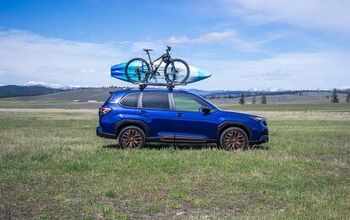Car Communication Technology Gets 'Thumbs Up' From Drivers

The United States Department of Transportation just released data suggesting an overwhelming majority of drivers who experience connected vehicle technology respond to it favorably and perceive it as an important safety measure.
Connected car technology uses wifi signals to allow cars within a certain proximity to communicate. That communication relays safety information and can work to prevent crashes.
“Vehicle-to-vehicle technologies have the potential to significantly reduce fatalities and injuries in crashes and could one day help motorists avoid crashes altogether,” said David Strickland, NHTSA Administrator. “These technologies may prove to be the next game-changer as we look at the future of auto safety.”
The data NHTSA refers to is drawn from a series of six seminars where drivers were introduced to the technology. Those seminars took place over the course of a year, and ultimately concluded that 82 percent of the drivers involved agreed that car communication would be beneficial in a broad, real world application.
“Safety is our top priority, and we are always looking for ways that innovative technology can be harnessed to improve driver safety,” said Transportation Secretary Ray LaHood. “Connected vehicle technology offers tremendous promise – for improving safety, reducing traffic jams and increasing fuel efficiency. It’s encouraging to see that most drivers agree and want this technology in their cars.”
While it should be obvious that most people would want something to make driving safer, and that they would imagine it in a positive light, problems with car communication might set difficult barriers in place. Both cars need to be equipped if a reciprocal safety feature is going to work.
That said, the Department of Transportation is beginning the second phase of the study, which will involve approximately 3,000 vehicles over the course of another year, driving on open roads in Michigan. Eight major manufacturers have also signed on to help with the research. With backing and customer demand, something like this might actually be feasible in the future, though it will probably be years before it’s actually effective.

Luke is an energetic automotive journalist who spends his time covering industry news and crawling the internet for the latest breaking story. When he isn't in the office, Luke can be found obsessively browsing used car listings, drinking scotch at his favorite bar and dreaming of what to drive next, though the list grows a lot faster than his bank account. He's always on <A title="@lukevandezande on Twitter" href="http://twitter.com/lukevandezande">Twitter</A> looking for a good car conversation. Find Luke on <A title="@lukevandezande on Twitter" href="http://twitter.com/lukevandezande">Twitter</A> and <A title="Luke on Google+" href="http://plus.google.com/112531385961538774338?rel=author">Google+</A>.
More by Luke Vandezande































Comments
Join the conversation